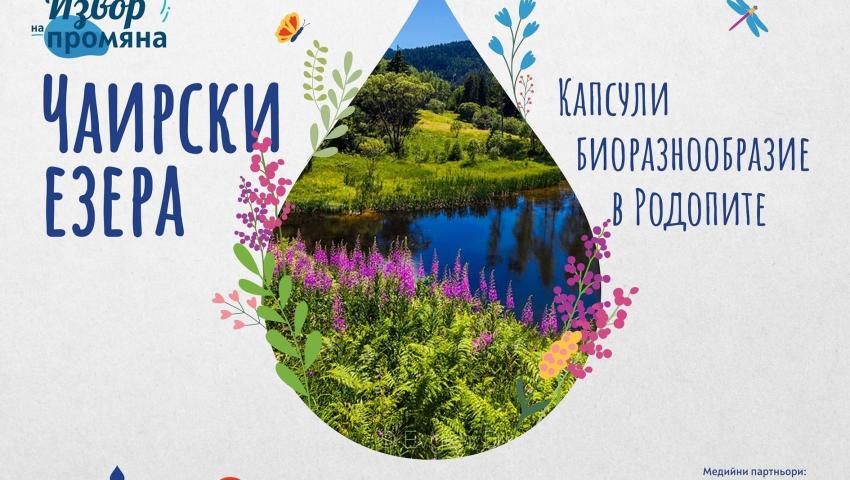Earth Day Reminds Us: There Are Hidden Heroes in Nature Worth Protecting
In the heart of the Rhodope Mountains, nature tells its most captivating stories

On April 22, we mark Earth Day – a moment for reflection, responsibility, and action for the sake of the planet we call home. While we often focus on major environmental issues, we sometimes forget about those hidden, vulnerable ecosystems that play a vital role in climate balance and biodiversity. One such ecosystem is peatlands – natural “sponges” for carbon, sources of life, and refuges for rare species.
A place like this can be found in the Chair Lakes in the Rhodope Mountains – an area of unique nature where peatlands do not merely exist but support an entire micro-world of endangered and rare species. In support of their conservation and restoration, DEVIN and the Bulgarian Biodiversity Foundation (BBF) are joining forces in the project “Chair Lakes – Capsules of Biodiversity in the Rhodopes.”
Here, in one of the few remaining high-mountain peatlands in Bulgaria, nature tells fascinating stories of beautiful and rare species of flora and fauna that are well worth preserving for future generations.
Roe Deer (Capreolus capreolus) – the smallest members of the deer family in Bulgaria, known for their grace and shyness. They move quietly, almost silently, relying on their sharp vision and hearing to avoid predators. They live on the edges of forests near peatlands, where they find both shelter and food. Vulnerable to climate change and human interference, any habitat loss is a loss of safety.
Dragonflies – aerial acrobats and predators that inhabit wetlands and serve as indicators of their health. Of the 13 species recorded near the Chair Lakes, some are listed as endangered due to their complete dependence on clean water and moist environments. Each dragonfly undergoes a stunning transformation – from a water-dwelling larva to an ethereal creature that barely seems to touch the earth.
Round-leaved Sundew (Drosera rotundifolia) – one of the rarest and most fascinating plants in Bulgaria. To survive in the nutrient-poor environment of peatlands, this tiny beauty has developed a sci-fi-worthy strategy – it feeds on insects. Using sticky hairs on its leaves, it traps its prey and digests it to obtain essential nutrients.
Fire Salamander (Salamandra salamandra) – a mysterious amphibian that appears only after heavy rain, when the air is moist and the ground is cool. With a black body and bright yellow spots, it sends a clear natural warning: "poisonous." When threatened, it secretes a substance that deters predators. This species is highly sensitive to pollution and drying habitats, making it a key indicator of peatland health.
Common Swift (Apus apus) – one of the most remarkable birds, seemingly made for the sky. They spend nearly their entire lives in the air – eating, drinking, sleeping, and even mating while flying. They can stay airborne for up to 10 months without landing. They feed on small insects above the open areas around the Chair Lakes, and their presence is a sign of a living and balanced ecosystem.
Marsh Gladiolus (Gladiolus palustris) – a delicate wildflower that grows along the edges of peatlands and wet meadows. With its vivid purple blossoms, it not only pleases the eye but is also part of a complex ecological puzzle. It depends on traditional grazing – both overgrazing and abandonment can drive it out of its natural habitat. Its presence signals a well-preserved, valuable natural area.
The project by DEVIN and the BBF aims to do more than just showcase these species – it works to protect and restore their home. This includes monitoring, scientific research, collaboration with local communities, and educational initiatives that inspire more people to become guardians of nature.
The Chair Lakes are living capsules of biodiversity – but also fragile and endangered ecosystems. Protecting them means not just caring for individual species, but contributing to the global fight against climate change. Peatlands store vast amounts of carbon and play a vital role in regulating the water cycle.
On Earth Day, it’s worth remembering that big changes start with small, deliberate actions. And sometimes – with a single drop of water in a lake hidden deep in the heart of the Rhodope Mountains.
